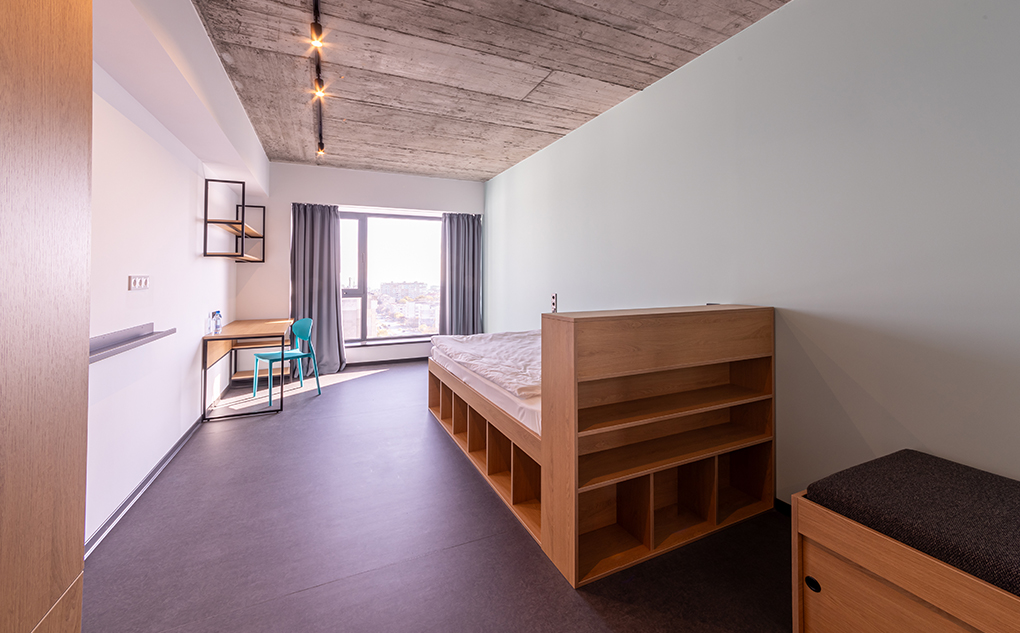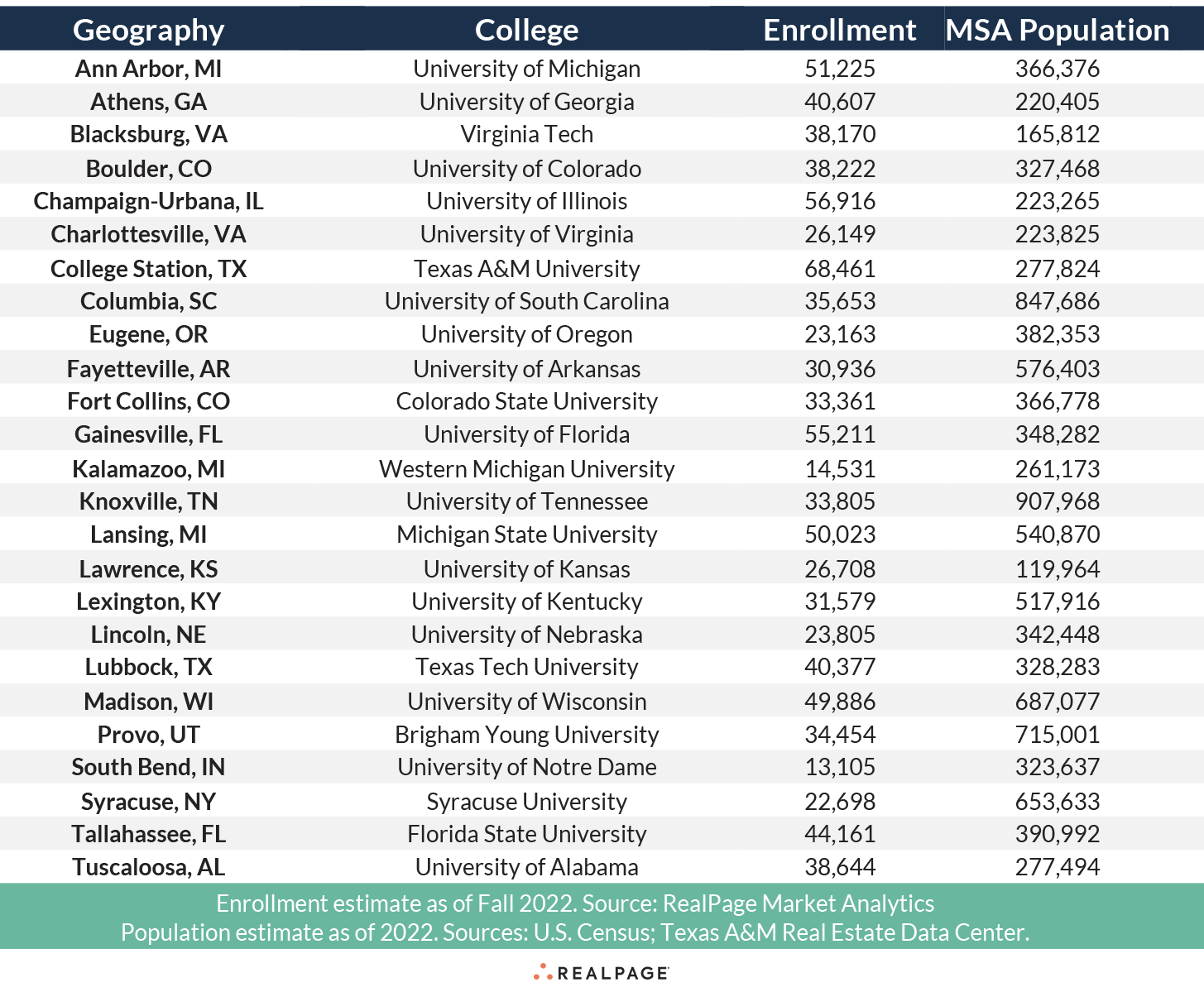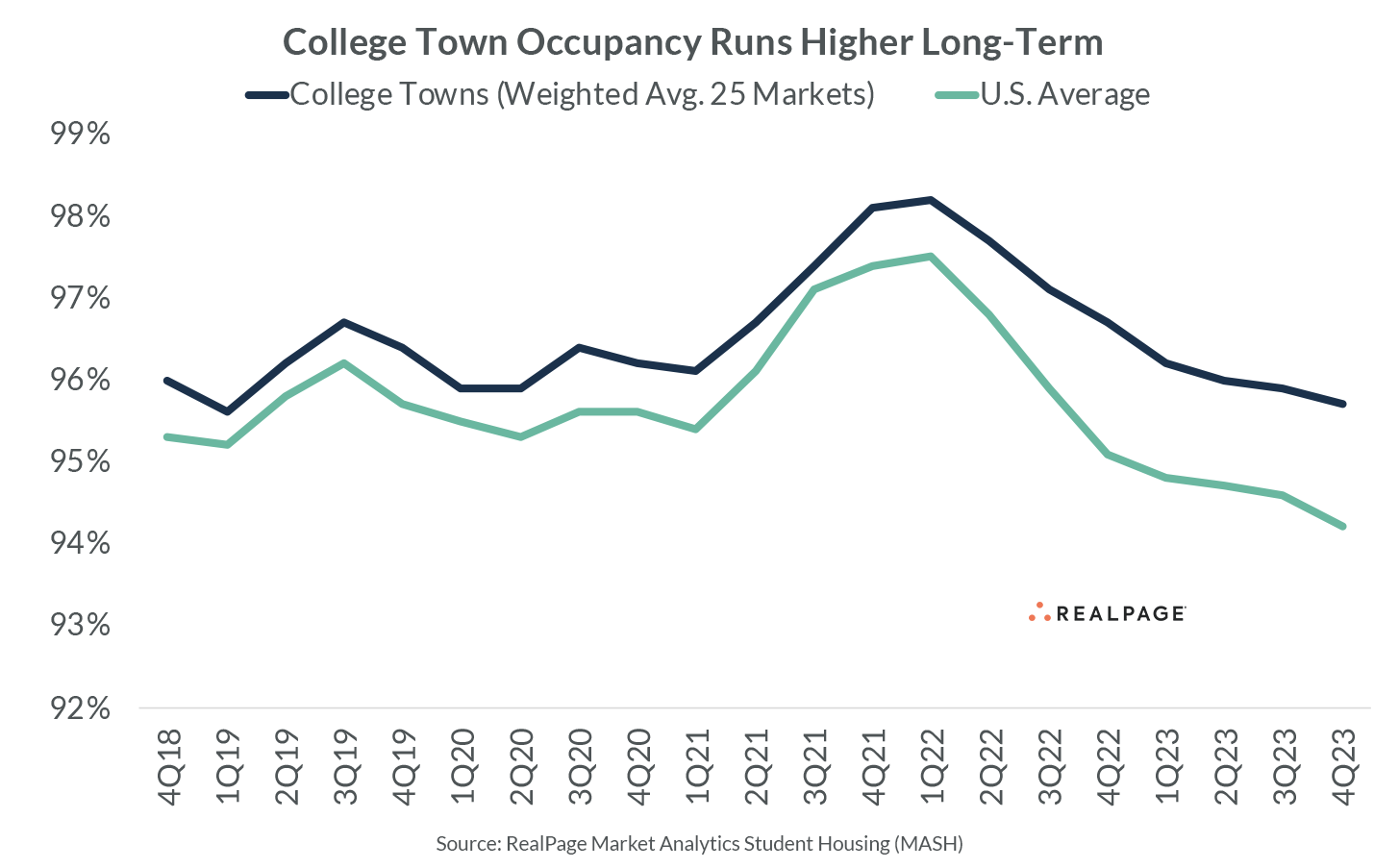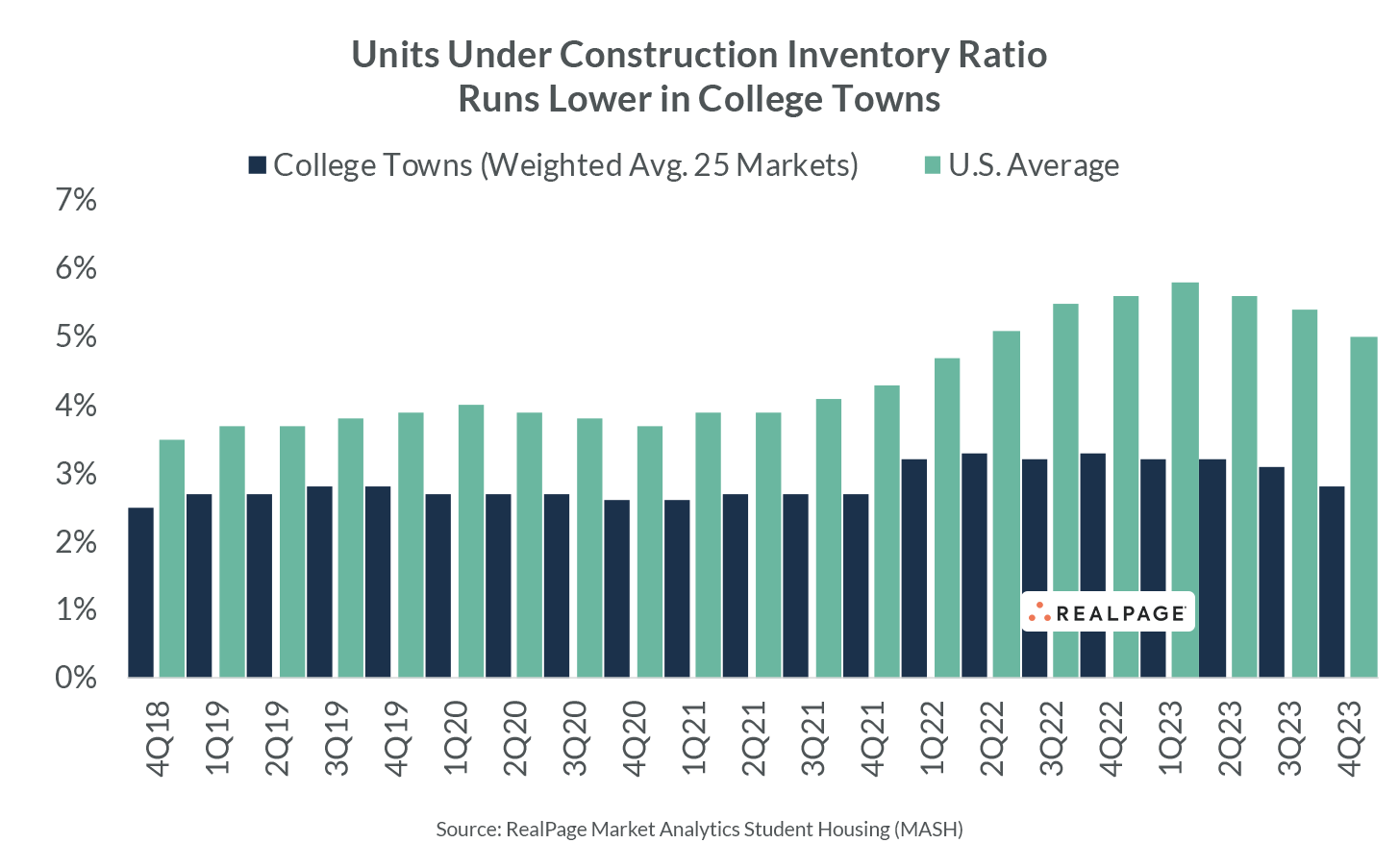College Town Apartment Markets Outperform U.S. Norms

College town markets have generally been more resilient during downturn periods, such as during 2020 and early 2021, though they also offer less upside during boom periods, such as during late 2023 and 2022.
In an analysis of 25 college towns (listed below) that have a population less than 1 million residents, include the presence of a major college and are forecasted by RealPage Market Analytics, RealPage found that college towns tended to offer a more steady apartment market performance compared to the national norm. Additionally, college towns tended to experience higher apartment occupancy than the U.S. overall, as well as more stablity overall. As of 4th quarter 2023, occupancy in college towns ran 150 basis points (bps) above the national norm, on a weighted average basis. That delta has more than doubled since the pandemic. As of 4th quarter 2019 (the last full quarter before COVID-19) the delta between college town average occupancy and the national norm was only 60 bps.
Part of that resilience undoubtedly comes from less supply pressure across college towns in general. The units under construction inventory ratio (construction as a percentage of total inventory) has historically run lower in college towns than the national norm. Across our 25 college towns, the units under construction inventory ratio averaged about 2.9% over the last five years, compared to about 4.5% nationwide.
However, the delta between the two has gotten larger over time, primarily as a result of more building nationwide, even as construction across college towns has remained relatively steady. As of 4th quarter 2023, college towns had an average of 2.8% of units under construction, compared to 5% nationally.
College towns refers to the following 25 markets.










